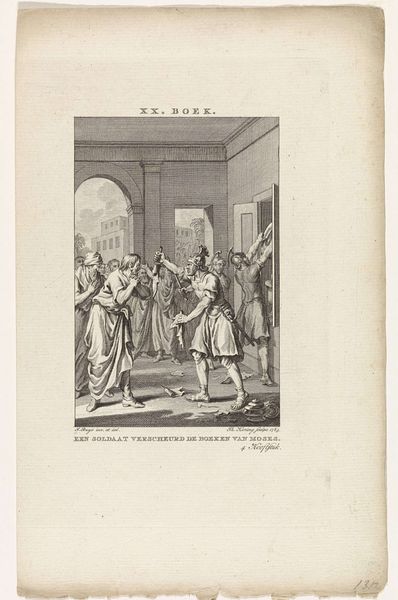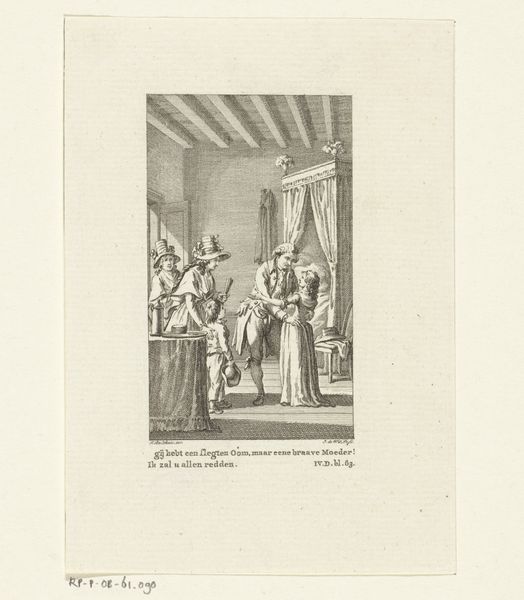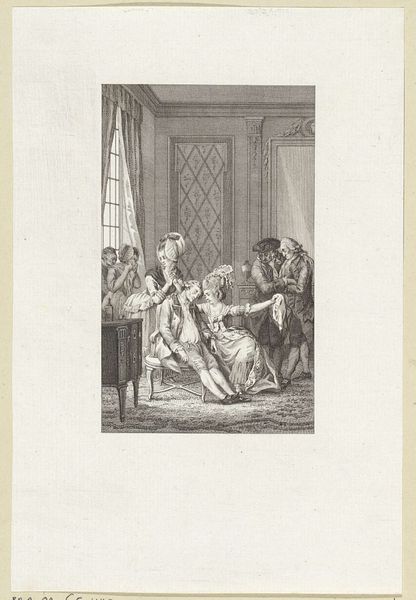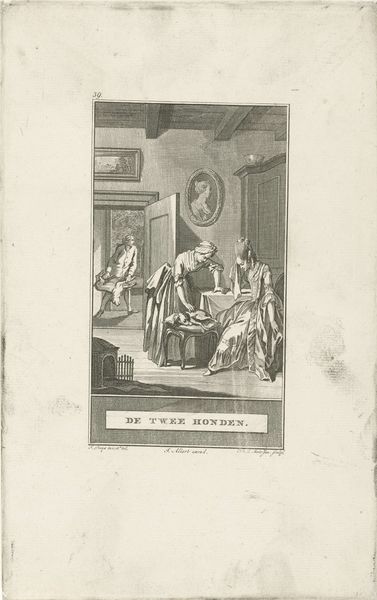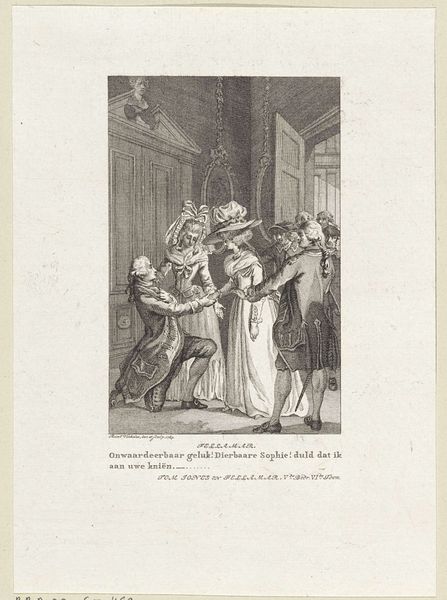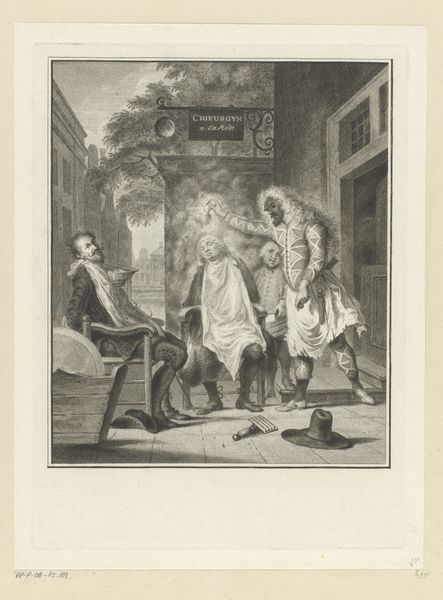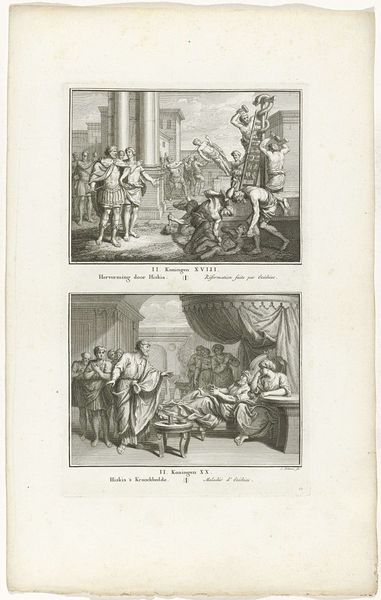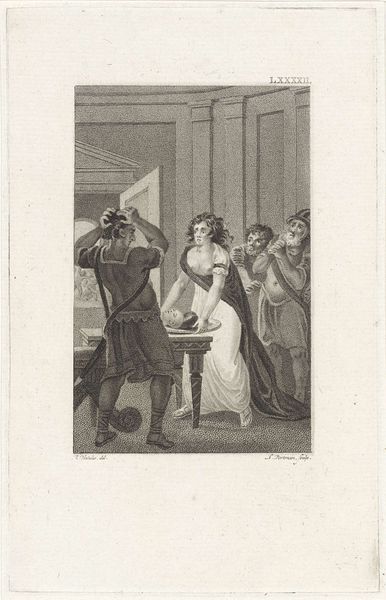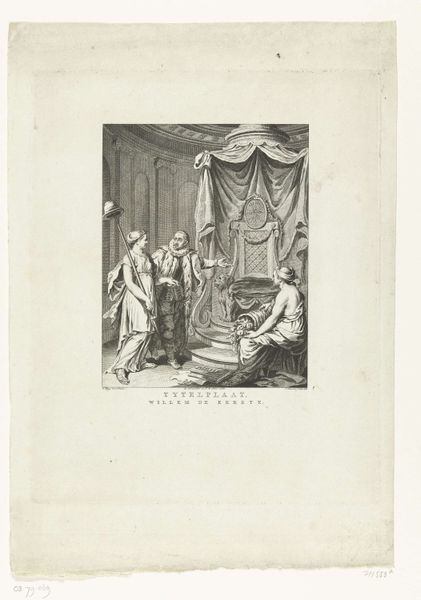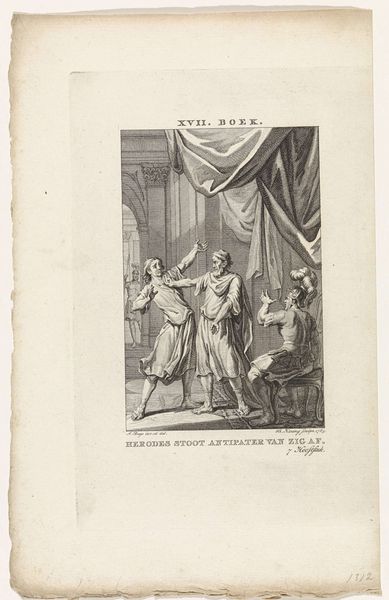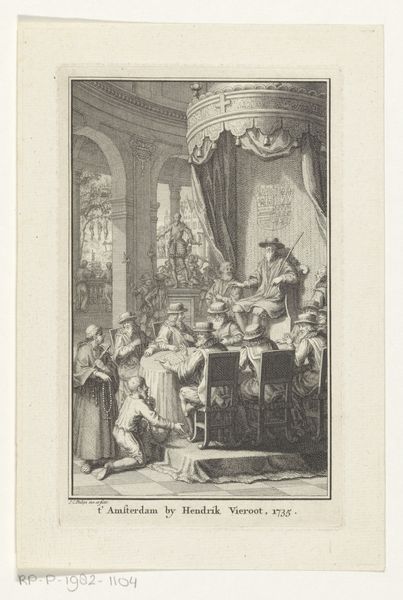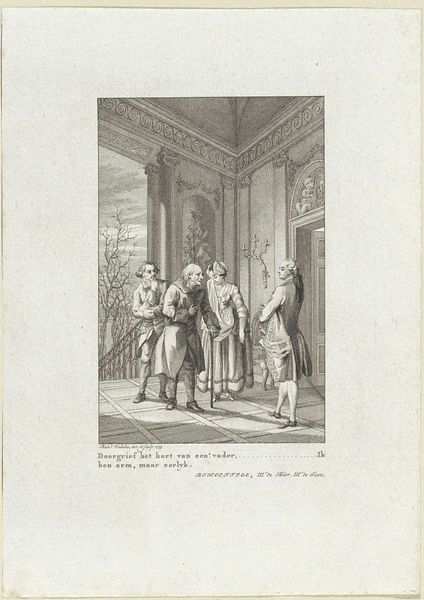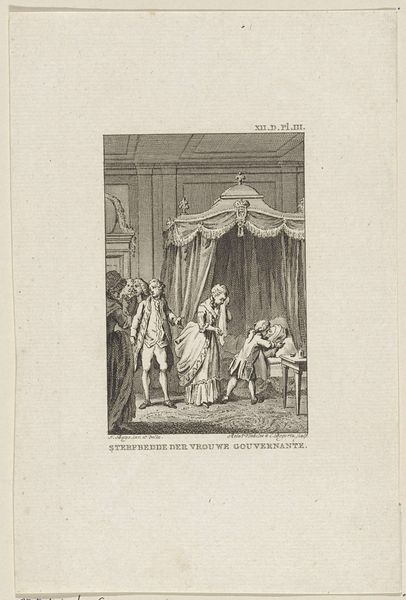
print, engraving
#
narrative-art
# print
#
old engraving style
#
figuration
#
history-painting
#
engraving
Dimensions: height 229 mm, width 148 mm
Copyright: Rijks Museum: Open Domain
Editor: We are looking at "A Mother Offering Her Dead Child as Meal" by Theodoor Koning, an engraving from 1785 at the Rijksmuseum. The scene is so stark, so dramatic. The crisp lines create a tense atmosphere. What strikes you most about its composition? Curator: Observe how the artist strategically employs light and shadow. The stark contrast isn't merely representational; it actively constructs the emotional weight. The meticulous lines of the engraving emphasize the linearity, guiding the viewer's gaze. Does the linearity suggest a chronological reading? Editor: It could. The eye definitely follows the woman's gaze towards the table, and then to the horrified soldiers. How do the figures' gestures play into this reading? Curator: Indeed, consider the exaggerated gestures of the soldiers. These gestures are not accidental but function as indices of psychological states. Each hand, each furrowed brow, is a signifier of horror. Have you considered the architectural setting? Editor: The arches and the doorframe seem like a classical backdrop, yet it doesn’t feel heroic. It heightens the perversion, perhaps? Curator: Precisely. The setting provides an ironic counterpoint to the barbarity depicted. Formally, this dissonance amplifies the print's disturbing effect, doesn’t it? Koning exploits the classical visual language to highlight societal and moral decay, focusing our attention on the power of stark contrasts within an artwork to underscore its conceptual weight. Editor: So it is through Koning's formal control, his command of line and space, that this engraving achieves its haunting power. I learned how line and form come together to evoke something dark and disturbing. Curator: And how artistic forms contribute to a more profound understanding of cultural and societal commentary.
Comments
No comments
Be the first to comment and join the conversation on the ultimate creative platform.
